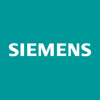In this week’s edition of Industry Signals, we explore how innovation is being reshaped by global trends from emerging AI governance frameworks to the deepening role of sustainability in corporate strategy. As highlighted by the UN’s latest Technology and Innovation Report, equitable access to infrastructure, data, and skills is essential for AI to drive sustainable development. We also explore the more prominent role sustainability is playing in corporate innovation programs, including product innovation, circular business models, and long-term value creation. And on the lighter (but no less insightful) side, we turn to LEGO’s structured-yet-playful approach to innovation from The Economist's Boss Class podcast, offering a refreshing look at how creativity thrives within constraints.
The United Nations' Technology and Innovation Report 2025
The United Nations' Technology and Innovation Report 2025 emphasizes artificial intelligence (AI) as a critical driver of sustainable development, but warns that its benefits are unevenly distributed, potentially widening global inequalities. The report highlights three leverage points—infrastructure, data, and skills—as essential for harnessing AI's potential equitably. It advocates for coordinated national policies, international cooperation, and inclusive governance frameworks to ensure AI technologies promote shared prosperity and sustainable progress, particularly stressing the need to enhance capabilities and collaboration among developing countries.
Sustainability as a Core Innovation Driver
Source: Siemens Xcelerator Community Research | Published: May 20, 2025
Sustainability has rapidly evolved from a compliance-driven obligation to a core driver of corporate innovation and strategic value creation. Leading companies are embedding circular economy principles, leveraging AI, and reimagining business models to reduce waste, optimize resources, and unlock new revenue streams. These efforts not only mitigate risk and enhance resilience but also position sustainability as a source of competitive advantage. As organizations move from pilot programs to systemic transformation, sustainability is becoming inseparable from innovation, with measurable economic and environmental returns.
Boss Class Podcast - Innovation: Coming up with new ideas
Source: The Economist Boss Class Podcast | Published: May 12, 2025
On the Season 2 premiere of The Economist's "Boss Class" podcast, host Andrew Palmer, who writes The Economist’s Bartleby column on work and management, explores innovation through the lens of LEGO, alongside startups Monumental and Wayve, and tech giant Google, each representing different stages and styles of innovation.
The segment on LEGO is especially enjoyable and insightful, and describes how LEGO blends structured creativity and a focus on direct customer interaction with disciplined production to achieve innovation success.
Dan Meehan, a designer at LEGO, emphasizes the importance of deeply understanding their audience, notably children: “We interviewed children across five countries... [kids] were thinking about space in terms of beauty, wonder, imagination, less about striving to be an astronaut.”
Meehan points out that true insights often emerge from unexpected play-testing scenarios:
“The very best part of my job is when we do kids’ tests, because kids are so honest, and they will break the model instantly.
Kids will also use models differently than the designers expected. There was a six-wheeled space rover, and for the whole of that playtest, that vehicle with six big wheels and it had suspension, and it didn’t drive for the whole playtest—it flew.
So the young boy that picked it up, he just flew this thing around the room, collecting little aliens and putting them in the back of the space truck. We asked about the six-wheel vehicle because there was a lot of time going into the mechanism because it had full suspension and it had six big wheels... And we said, do we need to add like the boosters? Do we need put bigger wings on it? He’s like, no, it’s cool just as it is and it flies.
So I was like, okay, no changes to the six-wheeled rover, right? That’s why I love it because we spent so long making sure it was a really cool vehicle that we tested driving over the desk and playing on the floor and a lot of sort of action play that we did with it to make sure it stood up to the rigours of play. We never flew it.”
CEO Niels Christiansen describes LEGO's critical balance of innovation and structure:
“We have a very structured way of being very innovative... Half of the company’s revenue each year comes from new products.”
He underscores how LEGO manages creative freedom within clear operational boundaries:
“How do you allow somebody to be super innovative... while restricting complexity so you can pull it off? Maybe it’s the secret sauce.”
To foster creativity, LEGO has initiatives like Fabulab Fridays:
“Once a month we have this Fabulab Friday... designers can do whatever skunk project they want... We need them to do that.”
Meehan elaborates on another innovation-focused event, Creative Boost Week:
“We have what’s called a Creative Boost Week, a couple of times a year... you have an idea, you have a week, make it, and present it to the whole design organization.”
However, LEGO carefully integrates creativity into precise logistical planning:
“Despite being super creative... we make decisions on what we think will be hot in 2026. We do that by the end of 2024.”
Christiansen neatly summarizes LEGO’s innovation paradox:
“Mastering total creativity on one side and a structured supply chain... making that gel—that’s quite special for us.”
That's all for this week's edition of Industry Signals.
Have a story, report, or event that you would like featured in an upcoming issue? Feel free to reach out via PM!
Industry Signals Community Editor
---
Photo Credit: Cover image credit CompareFibre via Unsplash.











